Thirty years ago, most of the cars used carburetors, and only a few people believed that electromagnetic pulse (EMP) is a real threat.
Nowadays, even NASA admits that EMP is one of those events we could not recover from: it would stop all infrastructures that sustain modern society which rely so much on electronics.
No communication, to transportation, and no escape with your fancy new car out of the crowded urban jungle.
So if you are one of those readers who wish to consider EMP-resistance as a factor in selecting a bug-out vehicle, then you should not miss this article.
I have been doing the survival thing for some time and I see precious few absolutes when it comes to survival and a whole lot of gray area. And I am not a mechanic or car salesman by trade, but I do have a solid background in technology and understanding of EMP as well what most people would term as vast experience as a self-reliant consumer.
Considering this, I will take a poke at answering some questions about EMP and how it would affect automobiles, which were asked by our readers after our recent article that described some top picks for ideal bugout vehicles.
9 EMP-Related Factors to Think Of When Buying Your Vehicle
First, there are factors to consider in choosing a post-EMP bug-out or survival vehicle:
1. Benefits of Diesel
A large and strong enough EMP could stop the extraction, refinement, distribution and sale of fossil fuels. Whatever gas you have on hand could be all the gas you get for years. The more highly a fuel is refined, the shorter its storage life. Diesel is less refined than unleaded so diesel stores longer.
You make biodiesel from crops that you grow. Diesel motors are somewhat simpler than gasoline motors in that they do not have an ignition system. This cuts down on some vulnerable parts.
Most tractors also run on diesel too, so for many homesteaders, it is worth considering.
2. Fuel Capacity
You can add oversized and/or additional fuel tanks to many vehicles, increasing the vehicle’s range. A post EMP world will likely have far fewer gas stations, if any. To get at any of remaining fuel, you will need a pump and hose like the Jackrabbit by Black & Decker.
3. Cargo or Towing Capability
By the time you pile in what will surely be everything you own in this world, your spouse, your 2.4 kids, grandma and the golden retriever, you may be looking for ways to increase your vehicle’s carrying capacity. So cargo space, a trailer hitch, roof rack, swing outs and so forth will come in handy. For many, the vehicle will likely double as their home.
4. Off-Road Capability
Features such as 4-wheel drive, a full size spare, plenty of ground clearance, all-terrain tires, lockers, extraction or trail gear, towing points, winch and off road lighting will come in handy post-EMP because roads will no longer be maintained, disabled vehicles and vehicles that have run out of fuel will litter the roadway. Imagine the highway or even your own street after a snowstorm without any snowplows or drivers to remove the snow and 4-wheel drive and over-size tires starts to look like a pretty good idea.
5. Ease of Maintenance & Repair
Simplicity is a good thing when it comes to survival. Without computers, there is only so much to “do it yourself” on newer vehicles so older vehicles have greater appeal. A good repair manual and well-equipped toolbox are mission-critical equipment.
6. Commonality of Parts
An expensive custom vehicle might look cool online or be fun to daydream about, but after a HEMP, the first time it needs a part, you might wish you bought something a little more pedestrian (no pun intended). Better still would be 2 or 3 less-expensive vehicles as opposed to a single vehicle that strains your financial resources.
My grandfather did this and I learned it from him. He would take multiple beat-up vehicles and turn them into fewer good ones … and have a bunch of spare parts left over. A bunch of spare parts would be a good thing post-EMP.
7. Fewest Possible Microelectronics, Computers or Chips
Some newer vehicles have in excess of 100 processors that run on miniscule amounts of power. They sense and control virtually every function of the vehicle and are very sensitive to EMP.
How far are you going to get without an engine, fuel injection, transmission or 4-wheel drive system? Sure, car manufacturers take reasonable precautions to shield them, but not against such great field strengths or over the entire frequency range EMP covers. Any transistor-based technology is vulnerable.
Avoid vehicles with the following systems, rewire them or replace them with their non-electronic counterparts and/or stock replacements in a Faraday cage:
- PCM (Powertrain Control Module)
- Anti-lock Braking System
- Electronic Fuel Injection
- Electronic Ignition
- Computers Controlling Critical Systems
- Consumer Electronics
- Long Antennas
- Negative Battery Terminal Grounded to Vehicle Frame
8. Overt vs Covert
It is often best to blend in as opposed to standing out. In the city, that might mean driving a white sedan or van. In the bush, it might mean a camouflage or matte earth tone paint job.
Other times, looking like you are not worth tangling with might be the better option.
9. Conductive Metal Body
For the best EMP-resistance, choose a vehicle with conductive metal body enclosing the engine and passenger compartment or cab over a vehicle with body panels made of fiberglass, plastic or any other non-conductive material.
If your vehicle already has these features or you are already doing these things, then you are already part of the way there. There are many features to look for and modifications to make to both your vehicle and your SOP (Standard Operating Procedure) regarding that vehicle.
No matter which automobile you choose, there is always more that can be done to minimize the effect of HEMP on the vehicle.
- Ground all conductive components of the vehicle to a single point on the chassis. Do not ground them to the earth.
- Park in an EMP-protected garage: I described how to build such a structure in the article How To Turn Your Q-Hut Into an EMP-shielded Home.
- Do not connect your vehicle to an unprotected engine oil warmer.
- Rewire with shielded wiring: Verify that your wiring is shielded or replace all you can with shielded wiring.
- Re-bond metal body panels: Remove body panels and make sure that you have good conductive bonds between body panels by removing paint and installing conductive gasket material or make sure you have metal on metal contact with as much overlap as possible. This will help the body conduct energy through the vehicle skin like the skin of a Faraday cage. Just do not allow yourself to be fooled into thinking that the vehicle skin is without holes that compromise its integrity. EM shielding is not all or nothing. Every little bit helps.
- Route wiring close to the vehicle frame
- Install ferrite clamps or snap on cores on cable ends
- Protect cable entry and exit points with surge suppression: This will need to be fast-clamping surge protection faster than one millisecond that will handle high voltages. (Think lightening protection.)
- Mechanical ignition (points and condenser)
- Install EMP-rated surge protection on antennas
- Mechanical fuel & water pumps
- Carburetor or mechanical fuel injection
- Keep spares of vulnerable parts you cannot replace in a Faraday cage: You may have a vehicle that is mostly good to go, but it still parts like a starter, alternator and voltage regulator that do not contain microelectronics, but could still conceivably be affected. Get some extras and store them in a Faraday cage. They do not even have to be new. Pull them off a junk vehicle and test them if you cannot afford new parts.
- Manual transmission: Some will surely disagree with me on this one, but they are easier to repair and make it possible to push start vehicles even if the battery is shot or missing. Even some diesels can be push or roll started if you wire open the fuel valve.
This is by no means a comprehensive list of vehicle modifications. Every vehicle is different. As previously stated, there is no one standard followed by manufacturers even for EMP shielding.
Keep in mind that everything you do improves your chances. Start with the easiest and least expensive and work your way through the harder ones.
10 Recommendations for EMP-resistant Transport:
There are a lot of good vehicles to choose from. There are many appealing aspects to these older vehicles. They are inexpensive to buy, inexpensive to work on as long as you provide the labor, simple to understand, inexpensive to insure and inexpensive to register.
You will have to do a little research on specific models to figure out what year the manufacturer started installing EFI (Electronic Fuel Injection) and so forth because I am supposed to be writing an article or two as opposed to a book here, but the topic is certainly worthy of a book.
1. Pre-1985 Toyota Hilux 4×4
These are tough little trucks. If you can find a 4×4 with the solid front axle and a carbureted 22R motor, you have a good starting point.
I have run one of these since the 1980’s and the worse I treat it, the better it runs. They are tough little trucks.
2. Sand Rail or Dune Buggy
The simpler the motor the better, but with larger motors, long wheel travel and skid braking, they will go faster than I want to go, that is for sure. Top a hundred mph off-road in one of these and it will either age you or make you younger. If you like to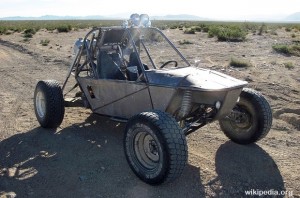 tinker and weld, they can be a great hobby. Hey, if they are good enough for the SEALs …
tinker and weld, they can be a great hobby. Hey, if they are good enough for the SEALs …
They are short on carrying capacity, but can sometimes fit in small planes when disassembled. Depending on where you live, a simple model of any of these may be a must have or you might keep one or more at a retreat or in a Toy Hauler trailer. There are even some diesel models out there.
3. CUCV
CUCV (Commercial Utility Cargo Vehicle) on the surplus market. They are basically a military diesel pickup or Blazer.
They started being manufactured in the 1970’s and are not armored, but some models do have some BOV-friendly features like a diesel power plant, blackout switch (to kill all lights), 4 wheel drive, dual 12v/24v voltage, Detroit lockers, dual alternators, Dana axles, brush bars, tow hooks and pintle hitches. And some are topped with shelters or ambulance beds.
You have to research each model though. Not all are 4×4’s and so on.
4. Pre-1980’s American-made Trucks and SUVs
Ford, Chevy, Dodge, these older US-made trucks are very common and are great candidates for a low profile bug out vehicles that double as daily drivers. I do not believe that any other vehicle on this list has the volume of accessories and options available to customize it.
5. Deuce and a Half Variants
There are many variants of these iconic 6×6 vehicles. Some are even bobbed to 4×4’s. They are not so great for keeping a low profile, but they are the go to choice for many preppers looking for a vehicle with plenty of cargo space and can be had starting at under $10K.
There are even some shops that will fix them up for you if you are not particularly mechanically inclined. Plan B Supply can hook you up with a Deuce and a half that is all decked out for the apocalypse for less than $40K, which is a tenth the price of a Knight, UniCat or the like, a whole lot less than an Earth Roamer and way more likely to still run after a HEMP.
6. Older Mercedes Benz Unimog (Diesel with Mechanical Fuel Injection)
Think of these as the European answer to the Deuce and a half. They were first manufactured just after WWII and were sold as the Freightliner Unimog in the US. They are popular as off-road expedition vehicles and even off road endurance events.
They are very reliable and you may find them hauling supplies in jungles, running the Dakar Rally, fighting fires or plowing snow in the North. They come in medium and heavy series.
Large diesel rigs like Unimogs and Deuce and a half’s are sometimes outfitted with marine diesel appliances and solar power and can even be fitted with a wind generator.
7. Sail Boats and Older Vessels With EMP-resistant Diesel Power Plants
If your bugout plan involves blue water, it likely involves a boat or sailboat. Space is limited on boats and must be carefully planned out, but many vessels have miniature versions of all the comforts of home.
There have been many self-reliant adaptations of boats and sailboats. They usually  have one or more sails, a diesel power plant and appliances that run off diesel, use solar and sometimes wind as backup power sources.
have one or more sails, a diesel power plant and appliances that run off diesel, use solar and sometimes wind as backup power sources.
A heavy duty desalinator and a backup desalinator are critical to make this option work.
8. Canoes, Kayaks, Sailboats, Pack Rafts and Other Small Watercraft
Maybe your bugout plan does not involve a blue water voyage, but it does involve running a stretch of river, lake or crossing a body of water. Man has used boats to solve these types of problems since prehistoric times.
A couple recently rowed across the Atlantic Ocean, but I would not recommend it and I am sure they would not either.
But if your route involves crossing a smaller body of water, a small watercraft may be an important part of your plan.
9. Draft Horses & Wagon, Horses or Pack Animals
After a severe HEMP, they may make a comeback. As some of our troops were surprised to learn in Afghanistan, there is just no substitute for horses and pack animals in certain terrain.
My county has a mounted search and rescue team that is very effective in certain regions. Mules are an important part of maintaining many of our nation’s wilderness trails to this day and American mountain men would not have been able to travel the Western US trapping without horses and mules.
I have been grateful for them on trips that I have used them and it is plain to see why they figured so prominently into life until the advent of the automobile and how they will again if we lose are large electrical transformers due to EMP or any other reason.
10. Motoped or Bicycle with Trailer
Motoped is on my shopping list. You do not have to be a prepper to appreciate not having to deal with the Department of Motor Vehicles and being able to park in the bike rack.
Motopeds and bicycles are quiet and can be carried on the outside or on top of your rig as backup transport. If the motor is small enough or it doesn’t go faster than a certain speed motopeds are not classified as motorcycles in many states, but this varies by jurisdiction so check your local laws.
Other noteworthy options are:
- Older Toyota Landcruiser
- Pre-1980’s International Scout
- Pre-1980’s Jeep, Cherokee & Cherokee Chief
- Pre- 1980’s Land Rover
- Volkswagen Bug and Bus
- Motor Cycle, ATV, UTV or Snowmobile
In truth, there are many vehicles that would serve the function of bug out vehicle admirably, but in the end, your choice will likely be determined largely by availability, opportunity and economics. Whatever your financial situation may be, automobiles are generally a lousy investment. Invest in function as opposed to form when it comes to rolling stock, including bug out vehicles.
Similar to the prepper who is all guns and no groceries, every so often, I see someone who owns a car that is worth more than their home or someone who has invested a substantial portion of their net worth in a vehicle while living in an apartment. This never fails to cause me to pause to consider it.
Find a vehicle that will get you from point A to point B and make sure you have your food storage and other survival priorities in place.
If you get too far out of balance in any area of preparedness, your plan is flawed.
Watch the video below to understand the damage an EMP can do!
If you found this article useful, please like our Facebook page and stay up to date with the latest articles.
This article has been written by Cache Valley Prepper for Survivopedia.
Source: survivopedia.com
Other useful resources:
The 3 Pioneer Survival Lessons We Should Learn
The Most Effective Home Defense Strategies
Old School Hacks for Off-Grid Living
The Medical Emergency Crash Course
The Smart, Easy Way to Food Independence
How to Survive the Coming 100 Years Long Drought

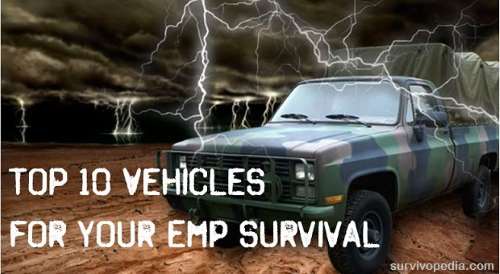
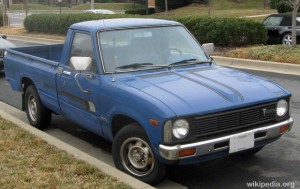
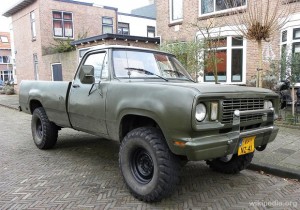
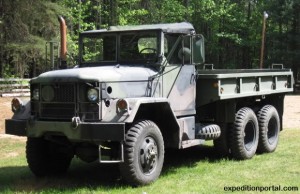
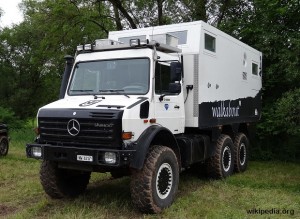

I have an 84 gmc truck, do you suggest any modifications for this vehicle other than the backup parts mentioned above?
You forgot early 80s and before Mercedes Diesels. They have vaccum controls(fuel pump,mechanical)I have a 240d manual transmission . I’ve started it ,by “popping the clutch” and driven it home. (Bad alternator,dead battery)!
“Negative Battery Terminal Grounded to Vehicle Frame” NO, you mean you shouldn’t have a POSITIVE battery connected to the frame! Practically no radios or other equipment are designed for a positive ground. I can see no practical reason for having a positive ground system.
The 1946-7 Plymouths were positive ground. So you better double check older vehicles.
How often have you seen anyone driving one of the vehicles you mentioned since the year 2000? Too many Americans think those vehicles were driven by cave dwellers. Even if you could find one; where are you going to find parts to restore or repair one?